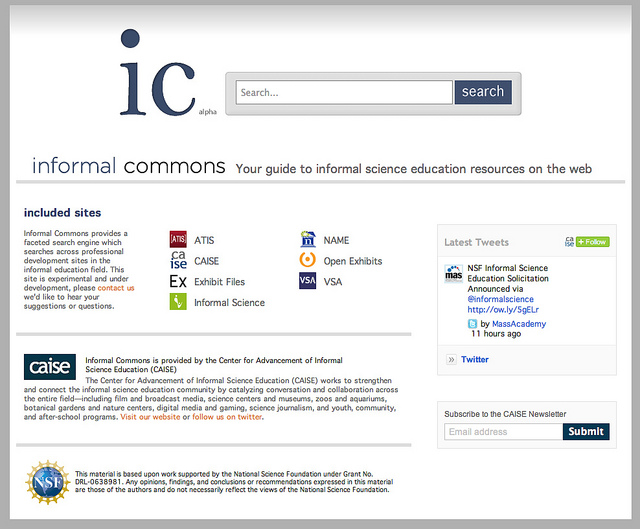Blog
Introduction to MoPA's Multi-touch Project

For the past few months my colleague Wes and I have been working on a new and exciting multi-touch exhibit for the Museum of Photographic Arts based in San Diego, California. The project is a collaboration between the University of California San Diego (UCSD), The National Institute of Information and Communications Technology (NICT), and The Museum of Photographic Arts (MoPA). My involvement in the project is made possible through Pacific Rim Undergraduate Experiences (PRIME), an internship program offered by UCSD.
I have been sent to Seika, Japan which is part of the Kyoto Prefecture. It is also where one of NICT’s offices is located. I am working at NICT to finish the multi-touch exhibit, which is written using Open Exhibits. NICT plans to use the finished product at their technology exhibition in August. It will give us a chance to test out the interface and improve on it before MoPA’s debut at Tokyo Photo 2011.
Currently we are working on the keyboard interface which will be used by a Japanese audience. Since we are not originally from Japan, it is pretty tough to design a friendly soft-keyboard. Any and all ideas are appreciated.
Emerging Exhibits: Exploring New Models of Human Computer Interaction (HCI)
This fall I will be teaching a course on exhibit development for the Cultural Resource Management Program at the University of Victoria. The course will be held in Vancouver at the Museum of Vancouver from September 26 -28. There is an online component that begins earlier in September.
I will of course show some examples from Open Exhibits, but the course will look broadly at developments in the field.
You can learn more about, Emerging Exhibits: Exploring New Models of Human Computer Interaction (HCI) and register on the UVIC Website. Here's a short description of the course:
Computer-based interactive exhibits are undergoing a major transformation. The lone, single-user kiosk is beginning to be replaced by multitouch tables and walls, motion-sensing spaces, networked installations, and RFID-based exhibits. Advances in augmented reality, voice recognition, eye tracking, and other technologies promise even more radical change for exhibits in the near future.
Collectively these new technologies represent a fundamental advance in Human Computer Interaction (HCI). This course will look at a new generation of computer-based exhibits that are more physical, more intuitive, and have more social qualities than their predecessors.
For decades, museum and education professionals have understood that interesting and provocative exhibitions and exhibits can encourage dialogue and deepen the visitor experience. However, until recently, the vast majority of the computer-based exhibits have been information-heavy kiosks with limited interactivity, providing only solitary experiences for visitors. The new models for HCI provide us with opportunities to rethink how technology is used in museums and other public spaces. Computer technology is on the cusp of finally living up to its promise in the museum world, providing a platform for developing compelling and authentic experiences for the public.
Open Exhibits SDK 1.6 Released
Open Exhibits SDK version 1.6 is now available.
OE SDK v1.6 is a minor relase, offering improved stability, an enhanced development structure, better workflow, and less tax on system resources.
The improved installer contains a compiled library, the source code for OE SDK v 1.6, and several example applications. (Thanks to our advisor Christian Moore, who made this important suggestion.)
OE SDK version 1.6 is not a mandatory upgrade, but it is highly reccomended. Earlier versions of the SDK will no longer be supported, nor referenced in the SDK documentation.
More information about the new version can be found in the FAQ, API documentation, and updated User Manual.
To download the new multitouch SDK, please visit the SDK page (or your profile page) and click the "Download SDK" button.
Massively Multiuser Multitouch Distributed Spaces (MMMDS)
SynergyNet has been actively developing applications for multitouch in the classroom for some time now. An area that has been identified as key to the sucess of such a massively multiuser multitouch project is the creation of a network of multitouch surfaces with sharable media. This has the potential to encourage collaboration when using IT on a fundamentally new level. One thing I would like to see is this approach is the development of an open standard for setting up group multitouch spaces and defining hierachical controls.
Search Across Informal Science Education Sites

Open Exhibits is one of the sites included in the new Informal Commons federated search site.
The purpose of the Website is to provide consolidated search of multiple informal science education (ISE) sites. Currently seven ISE professional development sites are included: Assessment Tools in Informal Science (ATIS), Center for the Advancement of Informal Science Education (CAISE), ExhibitFiles, Informal Science, National Association for Museum Exhibition (NAME), Visitor Studies Association (VSA), and Open Exhibits.
The site was developed using the open source Apache Solr search platform and while informal Commons is still "alpha," more development is planned this year. You can learn more about Informal Commons site development and future plans on the Ideum website or check out the site itself at: www.informalcommons.org
Informal Commons is also looking for Alpha Site Testers you can learn how you can help on the CAISE Website.
On a related note, we are working on a target search feature for Open Exhibits that will allow for better searching of software and blog posts. That should be done in just a few days!
